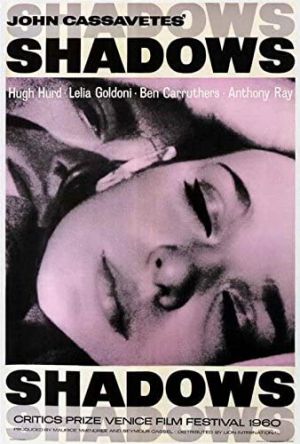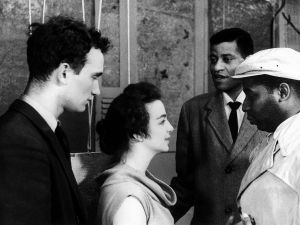Shadows (1959)
Shadows is a American drama movie, directed by John Cassavetes and released on November 11, 1959 in United States.This 87 minutes movie tells story about three African American siblings living in the New York City beatnik scene. The film’s portrayal of interracial relationships is a likely inspiration to others on this list that deal with the same. It starring
- Lelia Goldoni as Lelia
- Hugh Hurd as Hugh
- Ben Carruthers as Ben
- Rupert Crosse as Rupert
- Anthony Ray as Tony
- Dennis Sallas as Dennis
- Tom Allen as Tom
This movie also received several nominee including Best Film from any Source, Most Promising Newcomer to Leading Film Roles, Most Promising Newcomer to Leading Film Roles in BAFTA AWARDS 1961 and Winner (Pasinetti Award) in Venice Film Festival 1960.[1]
Plot
Set in New York City, circa 1959 John Cassavetes's first feature, shot in 16-millimeter, centers on three African-American siblings living together in Manhattan; the oldest, a third-rate nightclub singer (Hugh Hurd), is visibly black, while the other two (Ben Carruthers and Lelia Goldoni) are sufficiently light skinned to pass for white.[2]
Controversy
The movie shows even though you have light coloured skin, people will treat you differently when they know you are mixed race. It happened to Leila, she is one of the 3 African-American sibling. She met Tony at the party, they even have sex and then Tony declares his love to her. But as soon as he meets her brother, Hugh who has black skin and realised she is African-American, he change completely. He exposing his racist sensibilities, angering Hugh, and deeply hurting Lelia.
There is also a scene when Ben the middle sibling who also has light colored skin attending his brother’s party and feels like outsider at the party because all the guest is black and he is upset when someone approches him and encourages him to integrate and join in. It shows that he prefers being white even though he is mixed-race because how African-American people treated in 1950s.[3]
It potrays how someone cant be free as they want just because the color of skin “It is notable that, unlike his flânant brother and sister, Hugh is never seen outdoors – he is confined to his apartment, rehearsal rooms, cramped nightclubs with hostile (white) audiences and seemingly deserted bus and train stations; this confinement is a visual and formal emblem of his segregation.”[4]

